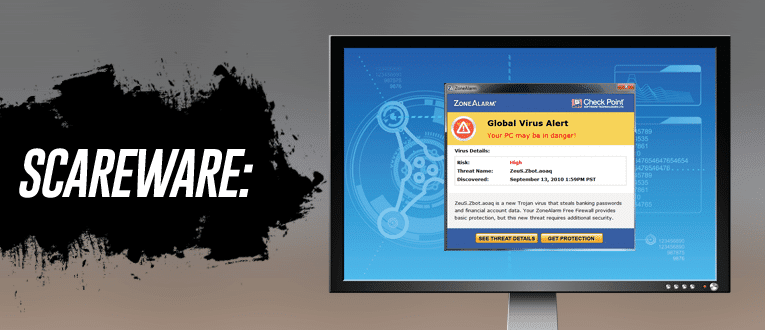Social Networks like Facebook, Twitter, Instagram, YouTube, LinkedIn, etc – recently Facebook has been accused of malicious electoral influence (though still in debates), it might probably have been made possible (if true) through SocBots. You must stay alert against any such dubious fame of someone’s controversial political post (ex: millions of likes, shares, reactions, comments, fans, retweets, opinion polls etc), in social media. In a majority of such cases, the originator’s account is a SocBot and not a real user, cautions Reetwika. She tells us how to prevent being a prey, in the weekly column, exclusively for Different Truths.
SocBot, abbreviation of ‘Social Robot’, is an automated software with artificial human intelligence, which is purposely created by unknown creators to flood internet mainly via social media with fake news, top stories, new releases, misleading reviews, etc for promotional, competitor espionage, political campaigning, public advocacy, journalism, marketing or PR purposes. However, it can also be used for legitimate purposes.
That is why, SocBot is not a cybercrime, but the creator might have malicious or unethical intents behind spreading SocBots through social networks. Many times we come across viral posts, which are not only eye-catching but also shocking at times including fake news of celebrity demise, dreadful changes in banking policy, spam multimedia forwards, inject influential biased opinion and trends, foster fame  through arbitrary followers, debatable political comments, false popularity stunts, lucrative job alerts, auto responses, untruthful claim of success by bloggers, social media fan booster programs, bogus hard to believe kind of discount offers, dishonest product reviews, unrealistic count of social media fans blah blah blah – all could have been made possible by use of SocBots.
through arbitrary followers, debatable political comments, false popularity stunts, lucrative job alerts, auto responses, untruthful claim of success by bloggers, social media fan booster programs, bogus hard to believe kind of discount offers, dishonest product reviews, unrealistic count of social media fans blah blah blah – all could have been made possible by use of SocBots.
Their responses look so humanlike that we often get fooled by them. Sophisticated interactions, random replies with common spelling errors, syntactical mistakes, microblogging formats etc are typical characteristics of a SocBot.
Like in all my columns, here I share some common tips to prevent yourself from the lucrative clutches of SocBots.
- Chatting Messengers like Whatsapp, WeChat, Viber, etc. – How many of us keep receiving startling forwarded messages especially from the so-called common interest groups? Well, that’s the most popular of all the SocBots at this moment. It’s perhaps the easiest way to spread and create a network of SocBots via these instant messaging platforms. The very first thing you should stop is to believe in those and share the same with your contacts. SocBots, if not spread, are not harmful, unlike malware.
- Social Networks like Facebook, Twitter, Instagram, YouTube, LinkedIn, etc – Recently Facebook has been accused of malicious electoral influence (though still in debates), it might probably have been made possible (if true) through SocBots. You must stay alert against any such dubious fame of someone’s controversial political post (ex: millions of likes, shares, reactions, comments, fans, retweets, opinion polls etc), in social media. In a majority of such cases, the originator’s account is a SocBot and not a real user. Try to check the profile picture of those users – cartoons, models, landscape, unknown logo, political quotes, public figures, etc are mostly fake. Also, you must be mindful of how fast they keep reposting same or similar messages on different social media groups – it might be a part of political campaigning. Another important aspect which may help to detect a SocBot is a user’s follower-to-friend ratio – unusual imbalance will be a surer test of authenticity.
- Scheduled Social Media Posts – Many social networks often allow scheduled posts for a later date
 and time. Do you really think some employee is waiting to post your messages at your scheduled hours? It’s nothing but a SocBot who would play your part when you are away to release the post on your behalf. Your followers will see it coming from your account with no idea of the SocBot playing the game from backscreen. According to a recent study, more than 60% of the total Twitter followers are SocBots. Therefore, many of the groups now require clicking on a CAPTCHA before responding to any high performing post just to prove that you are not a robot.
and time. Do you really think some employee is waiting to post your messages at your scheduled hours? It’s nothing but a SocBot who would play your part when you are away to release the post on your behalf. Your followers will see it coming from your account with no idea of the SocBot playing the game from backscreen. According to a recent study, more than 60% of the total Twitter followers are SocBots. Therefore, many of the groups now require clicking on a CAPTCHA before responding to any high performing post just to prove that you are not a robot. - Social Media Promo Boosters – Have you ever received any offer for buying promotional packs to boost your page, product, group, profile, post, photo, video etc at negligible cost from any of your social network provider or others? Well, who has not? Let me make you aware – most of such users who respond to your post through likes, shares, comments, responses, reshares, retweets, etc. against purchased booster packs are SocBots. Means, they are not real accounts who are actually interested in you or your posts. It can be easily programmed by scheduling automated codes to give a genuine profile look. Unfortunately, such fake admiration does not really fetch you organic hits for which you had paid the money, however trivial it may be. It will only momentarily increase the number of likes with no increase in sale. There is no shortcut to success. The best way to gain fame is to try it yourself in original name or through legitimate promotional service providers. Prefer to aim realistic results rather than getting influenced by unnatural recognition by unknown users. You may like to install a Botometer (score based free web service) to validate profile identity of unknown accounts.
- False Hotel, Product or Service Reviews – At times, SocBots are purposely bought by business houses to promote or create a false acceptance of their products or services in the market or demote competitor’s portfolio. This is very common in the Travel Review portals, E-commerce sites, Survey corners, etc. Many users make their purchase decision only after reading a substantial number of reviews. So, SocBots could be very misleading for them. If you fall in that user category, then try to look out the total number of reviews done by any person (can be found in reviewer’s profile) whose review has excessive positive or negative shade. If the count is uncharacteristically low with exaggerative comments for only a handful of cases (less than 5), then there is a high chance of it being a SocBot.
- Auto Notifications – Well all SocBots are not malignant. It depends on the purpose it serves. Many service providers have cut down their costs by simply placing SocBots on their web interfaces to immediately acknowledge the incoming customer emails and chats instead of deploying a 24*7 call centre.
Please keep in mind, SocBotnets are getting stronger with the exponential increase in the number of internet users. Unfortunately, not all of them are as tech-savvy as you. Like we may hope now, after reading this column at least you will not forward any non-value adding messages to your friends and family from tomorrow, helping the SocBots to create a virtual social network of their own, often termed as SocBotnets.
©Reetwika Banerjee
Photos from the Internet
#ScheduledSocialMediaPost #SocialMedia #Facebook #Twitter #SnapChat #Postings #CyberCrime #SocBotnets #Viber #Wechat #WhatsApp #Messenger #DifferentTruths








 By
By
